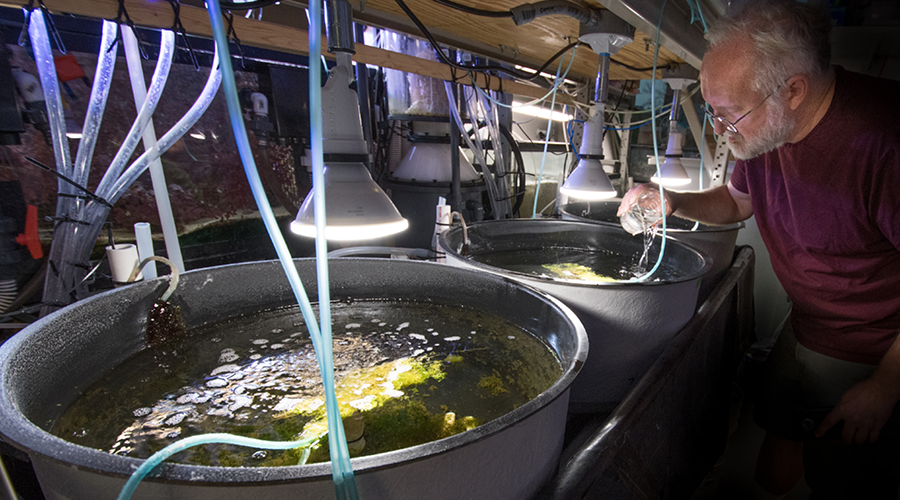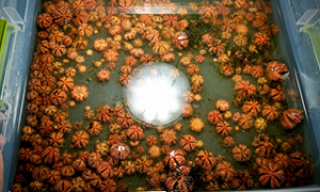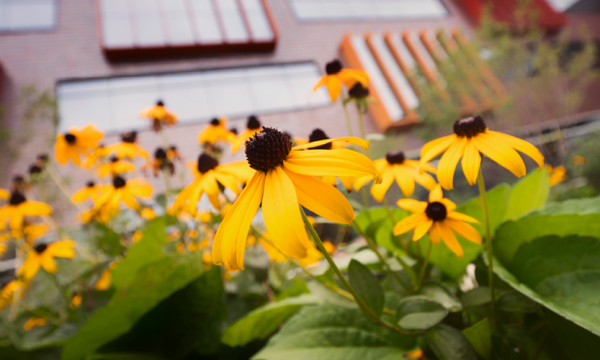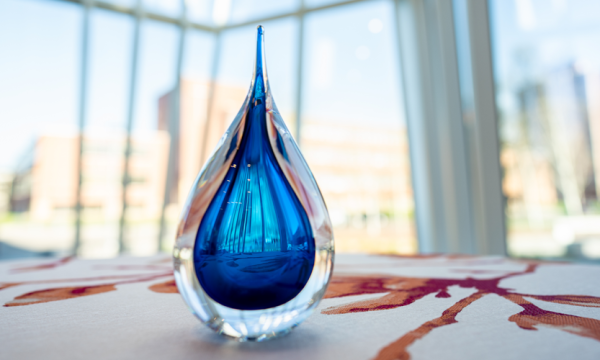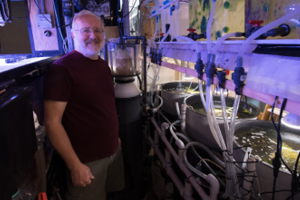
Blue tuxedo sea urchins glisten with brilliant red spines that alternate with iridescent blue bands. Their stunning appearance and habit of grazing on algae make them highly sought-after for coral reef aquariums, where they are harmless to delicate corals—“perfect herbivores,” says Bill Capman, associate professor of biology. Unfortunately, wild ocean collection typically involves a mortality rate of upwards of 75% for these delicate invertebrates.
Enter Augsburg’s marine fish and invertebrate breeding lab.
Over the past four summers, Capman and his undergraduate student researchers, including Kayla Cross ‘21, Andrew Grace ‘24, and Grace Adams ‘23, have developed a precisely calibrated method for breeding urchins in captivity, from initiating spawning via mild heat shock to using round, black vortex tubs to simulate the way urchin larvae drift in the open ocean. The students balance individual research projects with lab tasks, caring for diverse marine life and growing phytoplankton on site for the urchin larvae to eat.
Tucked away in a custom space on the second floor of the Hagfors Center, Capman and his team have become a major source of captive-bred urchins for the aquarium trade. Last year the lab held an exclusive supplier contract with one of the world’s largest marine fish breeders, shipping hundreds of urchins at a time via a collaboration with local marine fish breeder Chad Vossen. Vossen Aquatics has been marketing, selling, and shipping most of the animals produced in Augsburg’s marine breeding lab for several years. The money from the sales supplements grant funding to support lab operations, including pumps, fish food, lights—and always more salt mix.
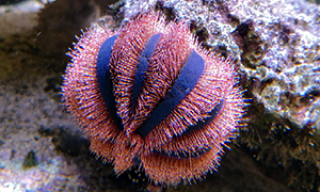
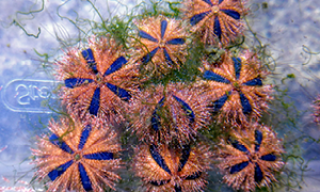
This year’s urchins are the great-great-great-grandchildren of the initial batch shipped from Bali in 2018. The operation’s success has attracted significant interest in the world of marine breeding, and has environmental ramifications as well. The mortality rate among the thousands of urchins shipped from the lab has been nearly zero, a substantial conservation benefit compared to wild harvest.
But for Capman, it all comes back to teaching science and biodiversity. “Our goal with the breeding lab is for students to have experience doing research, from hypotheses, to experimental design, to data collection and analysis, to presenting their findings. And with our coral reef tanks, students and visitors observe a wide diversity of species and interesting behaviors they would never otherwise encounter in Minnesota.”
Top image: Bill Capman tends to Augsburg’s sea urchin raising tubs. (Photo by Bill Capman)


